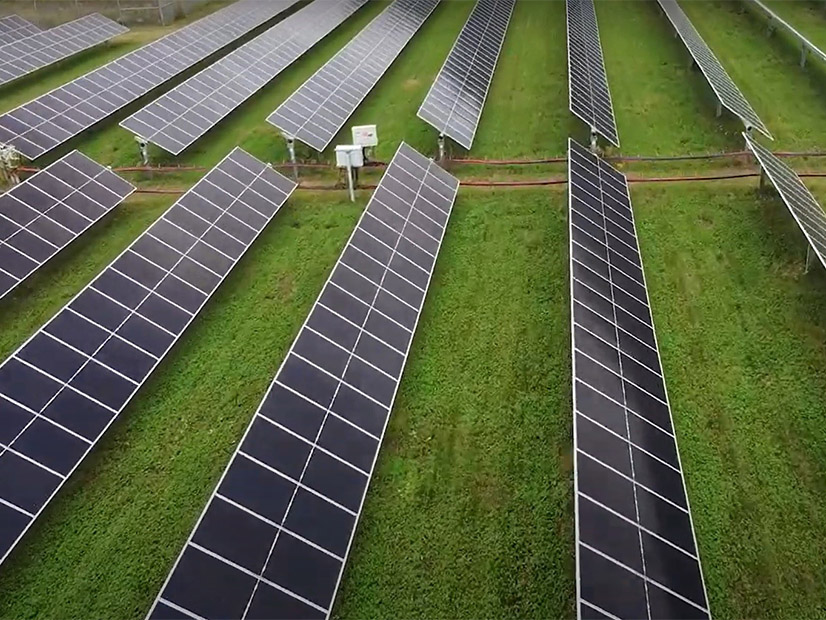MISO is adamant it should limit project proposals in future queue cycles to 50% of annual peak load to moderate its 300-GW, oversaturated queue.
During a Sept. 3 Interconnection Queue Process Working Group teleconference, MISO’s Ryan Westphal said an annual megawatt cap, in conjunction with a tech startup’s software for study help, will allow MISO to build study models faster without the “engineering problem” of too many hypothetical overloads, network upgrades and resources exceeding load. (See MISO Sets Sights on 50% Peak MW Cap in Annual Interconnection Queue Cycles.)
“We think that gives us the best chance of moving faster,” Westphal said of overall queue processing.
MISO’s current queue stands at 321 GW.
Westphal said a cap won’t hinder MISO’s resource adequacy, either. Using the queue’s historical 21% completion rate, Westphal said MISO stands to add roughly 67 GW within a few years, even with capping entrants.
In the long run, MISO estimates 310 GW will be able to hook up to the system through 2042. Westphal pointed out that figure exceeds the 248 GW of additions by 2042 that the RTO uses in its current transmission planning scenario. Westphal said that number should allay stakeholders’ resource adequacy concerns, where a cap might restrict too many projects from connecting.
Clean Grid Alliance’s Rhonda Peters asked how MISO plans to factor in significant new load additions in its annual megawatt cap.
Westphal said the cap calculation will be based on peak load using MISO’s five-year out models, which should capture definite load additions.
“Using what’s in the models as firm makes the most sense,” he said.
Westphal also said MISO’s attempt to conquer its unwieldy queue using Pearl Street’s study software will not negate the need for a cap.
MISO will lean on Pearl Street’s SUGAR (Suite of Unified Grid Analyses with Renewables) software to conduct screening of projects prior to conducting studies in earnest and to perform the first phase of studies in the queue.
MISO has delayed kickoff of studies on the 123 GW of projects that entered the queue in 2023 while Pearl Street assists with modeling. When the 2024 cycle will begin is an open question, since the RTO intends to have the cap in place before it formally accepts a new cycle. (See 2023 Queue Cycle Delayed into 2025 as MISO Seeks Software Help on Studies.)
“We have long been proponents of technology adoption in this space,” NextEra Energy’s Erin Murphy said, thanking MISO for reaching out for third-party help. However, Murphy said that if MISO and Pearl Street can achieve faster study results with more variables, that could negate the need for a megawatt cap on annual queue cycles.
Westphal said while SUGAR may help speed up study processing, without a queue cap, MISO still would run into the familiar problem of unrealistic dispatch models overflowing with too many projects.
Westphal said MISO still wants to return to its usual cadence of one-year queue cycles where submissions are accepted in the fall, validated through the holidays and begin studies in the new year, after MISO’s Board of Directors approves MISO’s planning models. However, Westphal added that it doesn’t make sense to accept a new queue cycle if the previous cycle isn’t far enough along in the study process.
Last week, the Union of Concerned Scientists’ Sam Gomberg suggested MISO plan to play “catch up” on queue studies if Pearl Street’s software proves successful. He suggested MISO consider accepting multiple queue cycles in a year to get back on track.
MISO is not entertaining using a volumetric price escalation — where developers pay fees that increase as they submit more projects for study — in lieu of a cap, as some stakeholders requested. Westphal said enacting escalating fees won’t solve MISO’s underlying “technical issue” of trying to study “load being served by too many generators.”
“In our minds, it’s not an alternative for a cap. We still believe we need that hard cap there to get us to reasonable study parameters and dispatch [model],” he said.
Several MISO generation developers argued that a volumetric price escalation would encourage interconnection customers to put only their best projects forward, discourage manipulation of the queue and allow small developers and co-ops an even playing field for submitting projects.
Savion’s Derek Sunderman said MISO could police the volumetric approach by requiring large corporations to sign forms attesting to their subsidiaries. Sunderman requested that the RTO conduct a stakeholder vote to gauge whether stakeholders prefer the cap or a volumetric price escalation.
Some stakeholders have asked MISO to consider giving developers estimated network upgrade costs at the screening stage of queue, if Pearl Street is proven effective at anticipating results.
MISO still is drawing up a plan to reevaluate the queue cap after three annual cycles, Westphal added. A few stakeholders have asked the RTO to view the cap as a short-term measure and commit to sunsetting the cap after three years of use.
“Unfortunately, there’s no silver bullet on the queue. It’s just constant improvement,” Westphal said.
MISO has scheduled a special meeting Sept. 30 to discuss the queue cap again. Westphal said he hopes to present “a final go” of the queue cap by then, make a filing at the end of October and earn FERC approval by the end of the year.




